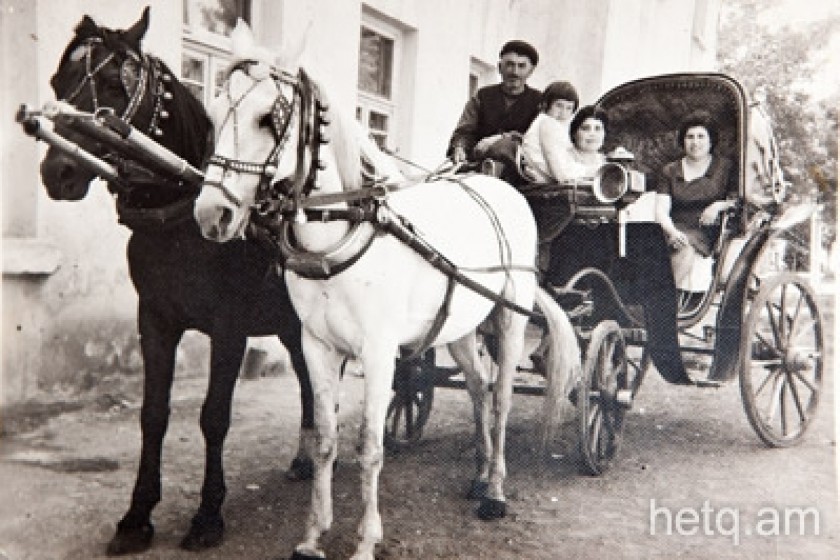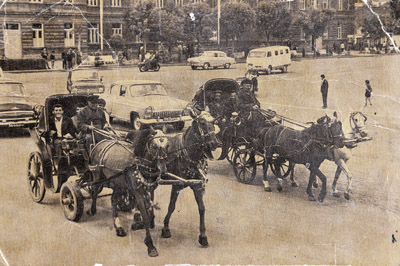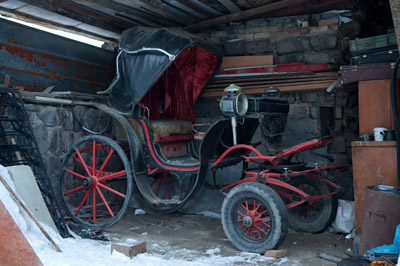
Gyumri's Glory - Phaeton Driver Karo and His White Horse
The black and white photo to the left, taken in 1968, shows one of the last horse-drawn buggies (phaeton) plying the streets of Gyumri in Armenia.
At the reins are master-driver Karo and his prized white horse, Koulka.
The accompanying photos of this bygone era in Armenia’s second largest city belong to Khachik Khachatryan. His father Karo was one of the last phaeton drivers in the town along with another well-known driver names Grish.
 Khachik says that his father had a favourite horse called Koulka that pulled his father’s carriage for seventeen years straight.
Khachik says that his father had a favourite horse called Koulka that pulled his father’s carriage for seventeen years straight.
“When my father died, I swear to you that the horse shed tears,” Khachik tells me.
Khachik’s forefathers moved to Gyumri from Kars back in the 1800’s. He says that the family has a long list of phaeton drivers to its credit.
With the growing use of cars, after WWII, the horse and buggy trade slowly faded. One of the reasons was that horses were constantly being frightened by the sound of the automobiles.
 |
| Phaeton driver Grish (left) and Karo |
However, in 1960, Grigor Hasratyan, President of the Leninakan Political Council, decided to restore the old tradition. When word got out, a handful of the remaining phaeton drivers rushed to take advantage of the opportunity.
By the 1970s, only two were left – Khachik’s father Karo and Grish.
Karo passed away in 1977 at the age of 59. His sons decided not to sell the carriage but keep it as a memento of their dad and a more romantic time.
“Every 2 or 3 years, we take it out of storage, washed it sown and give it a repainting. One year, we have the carriage out in the yard and an acquaintance of ours walked by. He said he was the godfather to a young couple about to be married and wanted to take them to the church in the phaeton. I told him it would be fine but that he had to get the horses,” says Khachik
Every since then, the sons have rented out the carriage on a number of occasions.
 |
| Karo’s phaeton |
“It turns out that years after my dad’s passing, his beloved phaeton still plies the streets of Gyumri. Neither I nor my brother ever drove the buggy. We went off and did our own thing and went into different professions. But the phaeton survives,” Khachik says with a smile that hides a degree of remorse.
Khachik works in the regional government office but still finds time to take care of the buggy with his brother’s help.
His father Karo appears in such films as “The Melodies of Shirak”, “Yerankyun” and “Heghnar’s Fountain”
(Phaeton is the early 19th-century term for a sporty open carriage drawn by a single horse or a pair, typically with four extravagantly large wheels, very lightly sprung, with a minimal body, fast and dangerous. The rather self-consciously classicizing name refers to the disastrous ride of mythical Phaëton, son of Helios, who set the earth on fire while attempting to drive the chariot of the sun)
 Videos
Videos Photos
Photos




Comments (2)
Write a comment